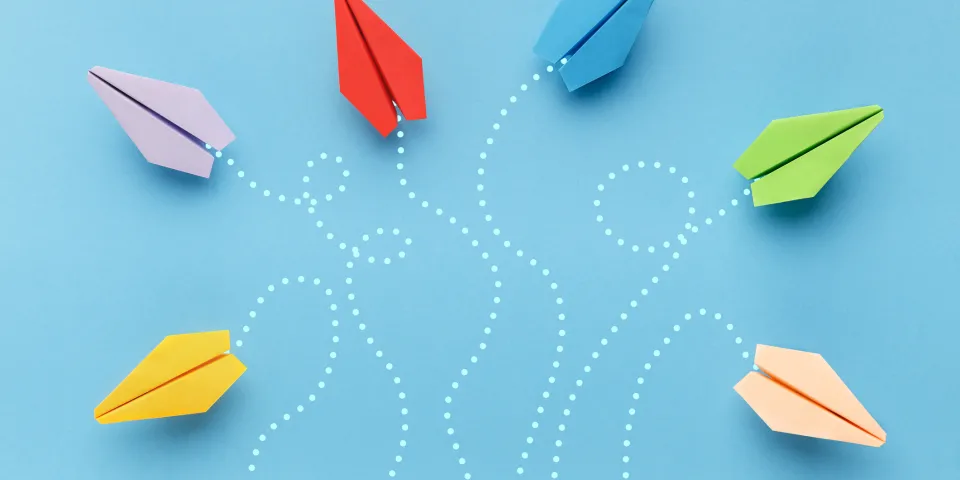Latest 
 Career Development Denise Alexander
Career Development Denise Alexander
Recent Blog Posts


Determining how to effectively highlight career changes on your resume can feel like a daunting task. But fear not! We’re here to guide you through this process. As an experienced career coach, I've helped ambitious individuals like yourself navigate the job market and secure their desired job.
Along the way, I’ve learned valuable insights and strategies you can use to walk any hiring team along your unique career path. By the end of this article, you'll feel confident in your ability to present your diverse professional journey, set yourself apart from other candidates, and attract the attention of potential employers.
First and foremost, take a moment to assess your transferable skills. These are the skills that can bridge the gap between your previous roles and your target position. Think about the valuable abilities you've developed throughout your career, such as leadership, communication, problem-solving, or project management. By showcasing these transferable skills, you not only demonstrate your adaptability but also position yourself as a candidate they can’t afford to miss out on.
When crafting your resume, consider creating a dedicated section that showcases these valuable transferable skills. Support them with specific examples or accomplishments that demonstrate how you've utilized these skills in your previous roles. This will draw the attention of employers and show them that you have the necessary capabilities to succeed in your new role.
Your resume's summary statement is like a captivating trailer for your professional story. It sets the stage and entices the reader to explore further. Take the time to craft a compelling summary that encapsulates your career journey and highlights your key qualifications. Tailor it to emphasize the common thread that runs through your various roles, showcasing your growth and progression along the way.
In your summary statement, provide a concise overview of your career history and highlight the transferable skills and experiences that are relevant to your new career path. Focus on the key accomplishments and milestones that demonstrate your ability to adapt and succeed in different roles. By presenting a cohesive narrative that connects your career changes, you show potential employers the value you can bring to their organization.
Are you familiar with combination resume formats? This increasingly popular format allows you to highlight your relevant skills and accomplishments at the beginning of your resume, followed by a chronological listing of your work experience. By placing your transferable skills upfront, you immediately capture the reader's attention and provide a comprehensive snapshot of your capabilities.
Start your resume with a skills section where you can highlight the skills that are most relevant to your new career path. Follow this with a concise summary of your work experience, focusing on the key achievements and responsibilities from each role. This combination approach highlights your skills while also providing a chronological context for your career transitions.
When describing your work experience, go beyond the basic expectation of just listing job responsibilities. Instead, showcase your accomplishments in each role. Highlight projects you completed, goals you achieved, and any measurable results you delivered. By touting your achievements, you demonstrate your ability to adapt and thrive in diverse work environments, regardless of industry or position.
Quantify your accomplishments whenever possible. Use numbers, percentages, or specific metrics to illustrate the impact you made in your previous roles. For example, instead of saying, "Managed a team of employees," say, "Managed a team of 10 employees and successfully increased productivity by 20% within six months." These specific achievements help employers understand the value you can bring to their organization, regardless of any career transitions.
Career changes can raise questions for potential employers, so it's crucial to address them transparently. In the experience section of your resume, consider providing a concise explanation of major career changes. Be authentic and briefly mention the reasons behind your transitions, highlighting how they contributed to your professional growth. This demonstrates your willingness to embrace new challenges and your capacity to leverage past experiences in your current pursuit.
When speaking with a potential employer, don't shy away from discussing the lessons you learned and the skills you gained during each career change. Emphasize how these experiences have equipped you with a diverse set of perspectives and abilities that can benefit your future employers. By framing your career changes as valuable learning opportunities, you position yourself as an adaptable and resourceful professional.
Congratulations! These strategies can help you to highlight your career changes and make them pop off the page — turning your resume into a picture of you that any employer will be able to visualize seeing as a part of their team.
By assessing your transferable skills, crafting an engaging summary statement, utilizing a combination resume format, showcasing impactful accomplishments, and addressing career changes with authenticity, you'll create a resume that stands out from the crowd. Remember to tailor your resume for each specific job application, emphasizing the skills and experiences most relevant to the position. With these strategies in place, you'll confidently present your career changes, proving that your diverse background is the valuable asset they’ve been looking for. Good luck on your journey to success!
Herzing’s Career Development team is happy to connect with you individually should you be interested in strategizing how to incorporate these techniques into your resume.
BLS pay estimates calculate the median annual wage for various occupations. Per the BLS the median wage for an occupation is: "The wage at which half of the workers in the occupation earned more than that amount, and half earned less. Median wage data are from the BLS Occupational Employment and Wage Statistics survey." Bureau of Labor Statistics (BLS), U.S. Department of Labor, Occupational Outlook Handbook 2024. BLS median wage estimates do not represent entry-level wages and/or salaries. Multiple factors, including prior experience, age, geographic market in which you want to work, and degree level and field, will affect career outcomes, including starting salary and earnings as an experienced employee. Herzing neither represents that its graduates will earn the median salaries calculated by BLS for a particular job nor guarantees that graduation from its program will result in a job, promotion, particular wage or salary, or other career growth.
Get the latest news you need to know, from study hacks to interview tips to career advancement. Have it delivered right to your inbox biweekly.